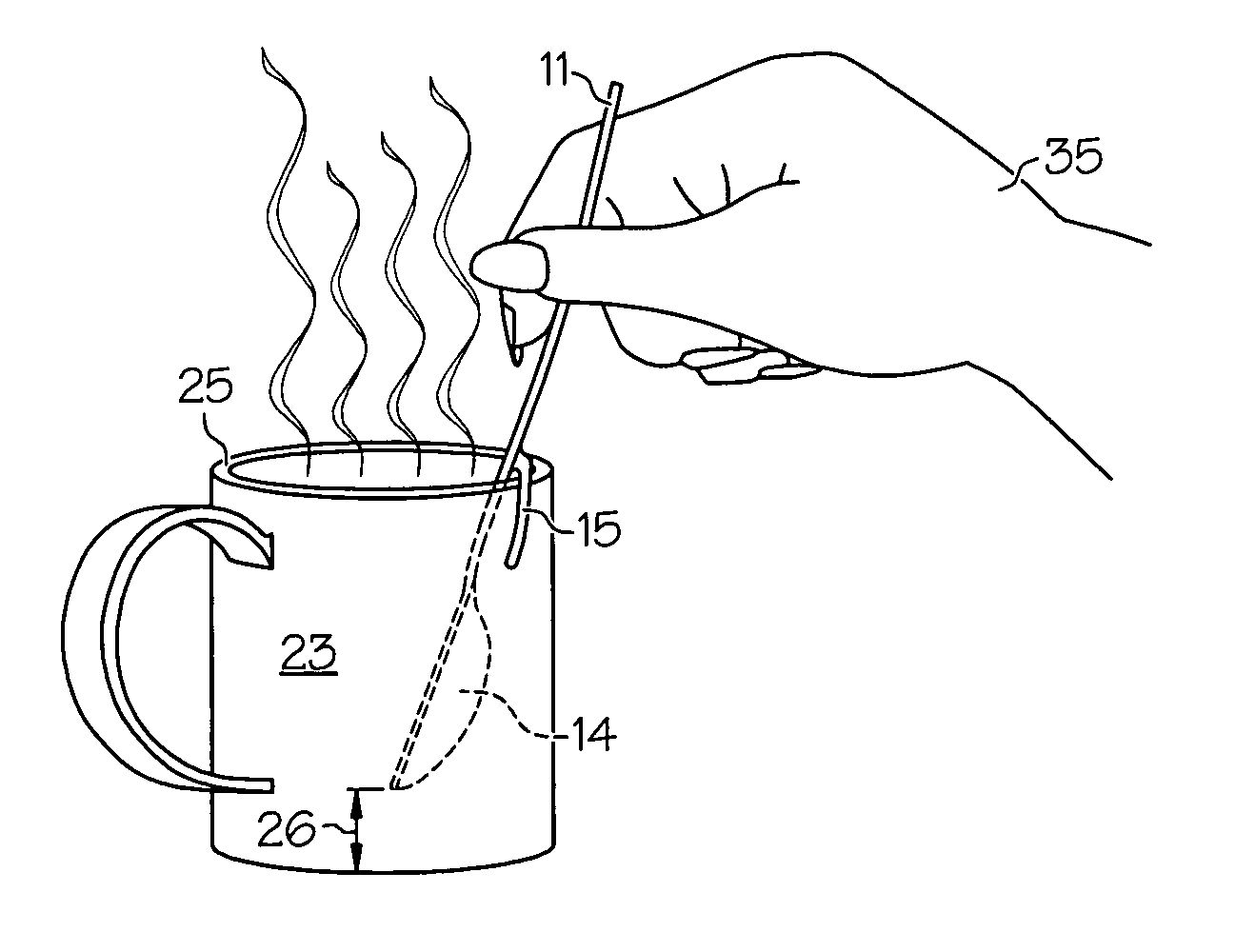Hygienic utensil
a technology for utensils and utensils, applied in the field of utensils, can solve the problems of unsanitary surfaces, reuse of spoons, and user's unhappy with the fact that spoons have been in contact with unsanitary surfaces, etc., and achieve the effect of convenient retrieval
- Summary
- Abstract
- Description
- Claims
- Application Information
AI Technical Summary
Benefits of technology
Problems solved by technology
Method used
Image
Examples
Embodiment Construction
[0026]The following detailed description of the invention is merely exemplary in nature and is not intended to limit the invention or the application and uses of the invention. Furthermore, there is no intention to be bound by any theory presented in the preceding background of the invention or the following detailed description of the invention. Reference will now be made in detail to exemplary embodiments of the invention, examples of which are illustrated in the accompanying drawings. Wherever possible, the same reference numbers will be used throughout the drawings to refer to the same or like parts.
[0027]Referring initially to FIGS. 1, 2, and 3 there is shown a hygienic utensil, according to a preferred embodiment of the present invention. Utensil 10 in the illustrated embodiment takes the shape of a spoon. The hygienic utensil 10 includes a stem 12, hook assembly 15, and bowl 14. Stem 12 further comprises handle 11 and neck 13. Neck 13 and handle 11 each comprise approximately...
PUM
 Login to View More
Login to View More Abstract
Description
Claims
Application Information
 Login to View More
Login to View More - R&D
- Intellectual Property
- Life Sciences
- Materials
- Tech Scout
- Unparalleled Data Quality
- Higher Quality Content
- 60% Fewer Hallucinations
Browse by: Latest US Patents, China's latest patents, Technical Efficacy Thesaurus, Application Domain, Technology Topic, Popular Technical Reports.
© 2025 PatSnap. All rights reserved.Legal|Privacy policy|Modern Slavery Act Transparency Statement|Sitemap|About US| Contact US: help@patsnap.com



